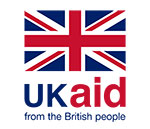This blog forms part of a blog series to be published over the coming weeks as we investigate how the digital and social exclusion of persons with disabilities are heightened during the pandemic and how mobile and digital solutions can combat the barriers. You can read part one of this series here.
Unequal access to education, employment, healthcare and other basic services for persons with disabilities versus those without, pre-exists the COVID-19 pandemic. In low- and middle-income countries (LMICs) where 150 million children live with a disability, many are often excluded from education with as many as 40 per cent excluded from primary, 55 per cent from lower secondary education and very few attending tertiary education, while technical and vocational training systems often fail to provide accessible training methods, tools and even awareness among teachers, according to International Labour Organisation (ILO). Specialised training courses for persons with disabilities not only create a form of segregation but also only provide limited skills and are misaligned to the needs of the labour market. Since the pandemic, a study by Leonard Cheshire found that in Bangladesh 80 per cent of participants with disabilities surveyed had been unable to work, while more than 85 per cent felt insecurity in their jobs. Anecdotal evidence has also highlighted that many persons with disabilities are more concerned with socio-economic impacts of the pandemic than the virus itself.
Barriers and challenges when shifting to remote learning and working
In many countries schools switched to remote teaching methods using online, TV and radio channels due to COVID-19. Although 2 billion mobile users accessed educational services on their mobile phones in 2019, the shift to online and digital solutions for distant learning is leaving learners with disabilities behind as those learners are considered least likely to benefit from distance learning solutions. There are a number of barriers that persons with disabilities face when shifting to remote learning. These include affordability and access to connected devices (e.g. smartphones) and to connectivity; lack of understanding of accessibility features by parents or care givers who now act as teachers; websites, programmes and content that are not designed to be scanned, read by braille or audio content not convertible to text; lack of consideration of specific needs for different types of disability.
Globally, we know that employment status of tens of millions of people have been negatively impacted by the pandemic. Since many persons with disabilities in LMICs work in the informal sector, e.g. as street vendors or freelancers, where workers are more exposed to the weakened economy, there is limited to no mechanisms to cope with loss of income. This also means higher likelihood to be left out of social protection services. Despite some governments providing cash transfers, these have been in part inaccessible for persons with disabilities, with few registered for eligibility and unable to register during the pandemic.
COVID-19 acts as window of opportunity to drive digital accessibility
Particularly in the wake of COVID-19 – which created an accelerated shift to online, TV and radio channels in the education sector – but also long after, the capabilities of mobile and digital solutions lie at the centre of innovative learning strategies and have the potential to reach more children.
In Turkey, Turkcell already provided a series of applications for disabled individuals pre-pandemic, e.g. My Gem Inside, an educational game app for children with autism. Since the outbreak, it has been collaborating with the Ministry for Education to support both in-app and TV content to reach more children who do not have access to smart connected devices. In Kenya, Kytabu, an EdTech platform is aiming to release around 2,500 new content pieces (e.g. videos and textbooks) for children with disabilities, including those hard of hearing and deaf, to provide accessible learning materials. Founder and CEO, Tonee Ndungu told us that COVID-19 opened up an opportunity to gain access to resources that enabled them to create materials for this segment of the society and to bring on-board content creators. Nevertheless, barriers around access to suitable devices still needed to be addressed, which further highlight an interdependency between the barriers outlined above.
Similarly, with an accelerated shift to remote working, there is a clear need to create more inclusive employment environments and labour market. An example comes from Telenor Pakistan where OpenMind is a long existing programme that provides training and skills development to persons with disabilities. This year’s programme specifically addresses the changing needs of the labour market driven by the pandemic and focuses on equipping persons with disabilities with new ways of working remotely and facilitating the process through accessible technologies.
Call to action
Digital assistive technologies are able to support online learning (whether at home or in school) and remote work in many ways, and combat barriers created by the society and physical environments. However, for digital inclusion to fully take place and for innovative digital solutions to scale, all barriers need to be addressed enabling persons with disabilities to be and to feel as productive and valuable members of society.
Further, COVID-19-driven shifts create an opportunity for employers to review policies around permanent remote working and hiring process. While daily commuting and physical barriers in the work environment have previously been preventing some persons with disabilities from access to employment, the pandemic has forced many organisations to rethink office-based roles and allow for individual flexibilities.
Combined, these are call for actions across a number of bodies in the public and private sector:
- Provide additional targeted support and digital resources for children with disabilities in schools and at home;
- Plan strategies to identify persons most in need of financial support and facilitate a transition from informal to formal economy;
- Issue training and re-skilling policies to ensure persons with disabilities are able to remain in and/or return to the labour market;
- Support youth with disabilities for the transition from school to work, and request organisations to report on inclusive measures during hiring processes; and
- Facilitate return to work programmes and design trials with involvement persons with disabilities.



